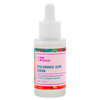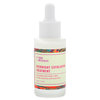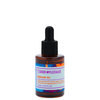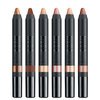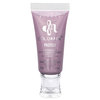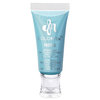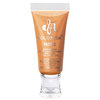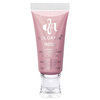Nail Art: Dazzling or Damaging?
Published Jan 26, 2012

With every color, finish, and design literally at our fingertips, the artistic opportunities available for our nails are endless. But with all the painting and filing, are you really damaging your nails? Many people forget that nail health is just as important as the vitality of skin and hair. Nails can also tell you a lot about your overall well-being—abrupt color changes can be indicative of large-scale health issues. So where does our stash of pretty polishes fit into the picture? “Nail products don't necessarily cause disease, but they may trigger contact dermatitis, a skin reaction resulting from exposure to allergens or irritants," says Richard K. Scher, M.D., a New York City-based dermatologist specializing in nail health.
NAIL INGREDIENTS TO KNOW:
ALLERGENS
Many Beauties—though not all—are allergic to certain ingredients that cause a chemical reaction. "Acrylic is a great example," notes Dr. Scher. "A small percent of the population can have an immediate reaction to acrylic nails upon contact, but most don't have that issue." Other allergens include formaldehyde and some coloring agents. Most lacquer formulas are now formaldehyde-free, but any prolonged contact may cause onycholysis, a condition where the nail plate (the top of the nail) detaches from the nail bed (the skin underneath the nail plate).
IRRITANTS
Primary irritants affect most people they come into contact with. Solvents such as acetone and alcohol are common examples that irritate the skin and possibly lead to brittle nail syndrome. "Many people who use cuticle softener sometimes get red, itchy skin as well—potassium hydroxide and sodium hydroxide are usually the irritants," says Dr. Scher. Toluene and dibutyl phthalate (two of the "three-free" ingredients removed from most modern polish formulas), are also considered primary irritants.
SHOULD YOU AVOID ARTIFICIAL NAILS?
New nail technologies such as UV-cured gel polish have recently burst onto the market with growing popularity, but are they safer than other traditional artificial alternatives? "You have to keep in mind that these gel formulations contain acrylic as well," explains Dr. Scher. "While gel nails are less occlusive than sculptures,—meaning they allow the nail to breathe more—they're still a hybrid of polish and acrylic." And like their artificial counterparts, removal is much more complex than taking regular polish off. "Nails have to be soaked in potent acetone or even drilled off—I'm already seeing the damaging effects in a few patients," reveals Dr. Scher. Since the layers are cured with UVA light, questions also arise over whether prolonged exposure is detrimental. "UV-cured nail treatments are still relatively new so the data are not there yet—we're waiting to see what happens,” says Dr. Scher.
 CORROSIVE OR CAREFUL?
CORROSIVE OR CAREFUL?
So is the nail fun harmful in the long run? "It's hard to say," says Dr. Scher. "While there are no scientific data, patients who let their nails breathe occasionally have healthier, stronger nails." And it's not just the polish, either—you can harm the nails through abrasive shaping techniques. "Let's put it this way—it takes the fingernail six months to grow from cuticle to nail tip," explains Dr. Scher. "If you're filing every week, you're doing something to your nail more than 20 times in six months." The abrasion that comes from excessive filing thins and increases nail bed sensitization.
BOTTOM LINE:
With that said, Dr. Scher believes everything most things are healthy in moderation. "I think there are many positive effects from nail products and nail art," admits Dr. Scher. "If you avoid the allergens and irritants, treat your nails well, and let them rest from time to time, there's nothing wrong with nail cosmetics." But if the art turns from a weekly hobby into a daily obsession, it's time to slow down the polish.

Richard K Scher, M.D., a dermatologist and author, is better known in the industry as The Nail Doctor. He is a Professor Meritus o
f Dermatology and former head of the Section for Diagnosis and Treatment of Nail Disorders at Columbia University-Presbyterian Medical Center. He is a prior president of the American Academy of Dermatology. Dr. Scher is an internationally known expert and pioneer in nail disease treatment and surgery, and wrote a bi-monthly column for Nails Magazine.



 CORROSIVE OR CAREFUL?
CORROSIVE OR CAREFUL?


